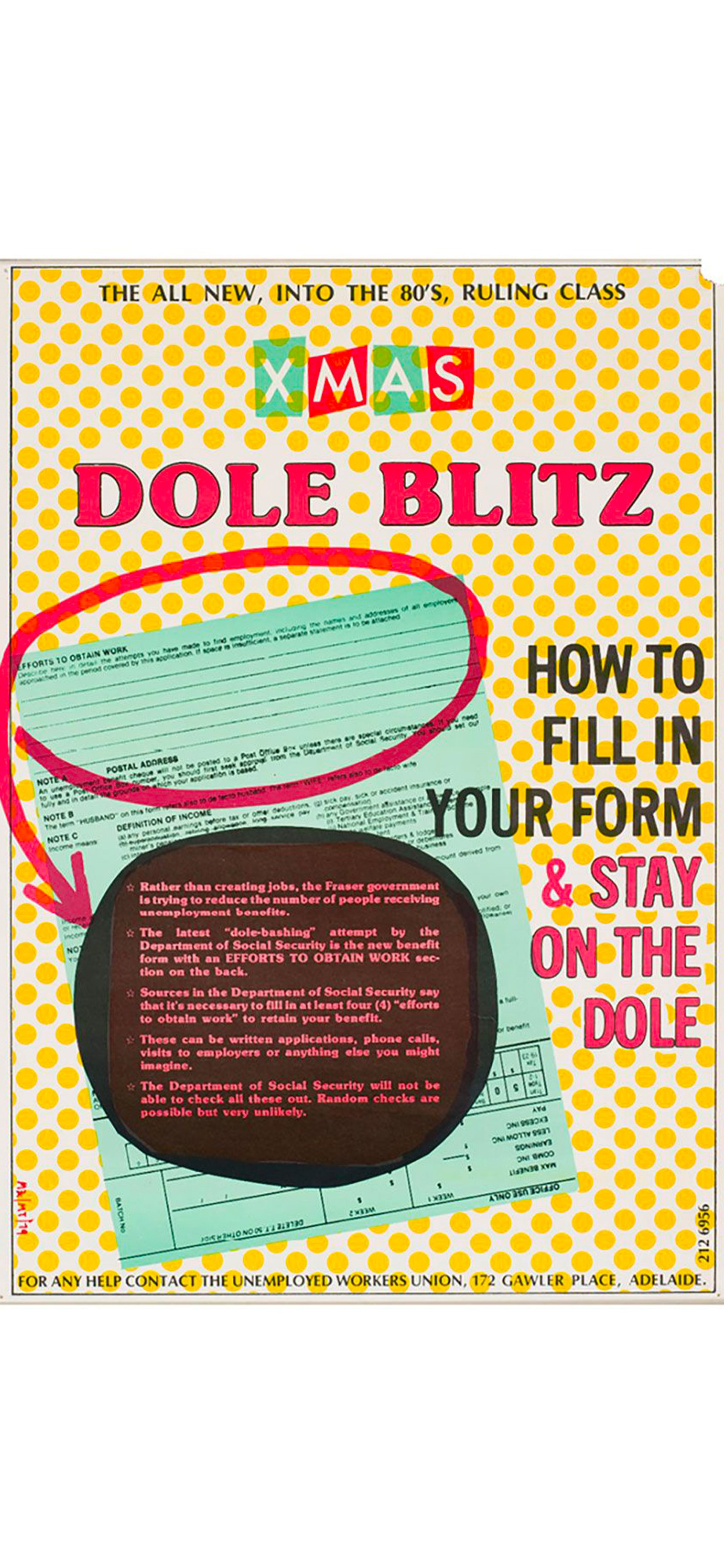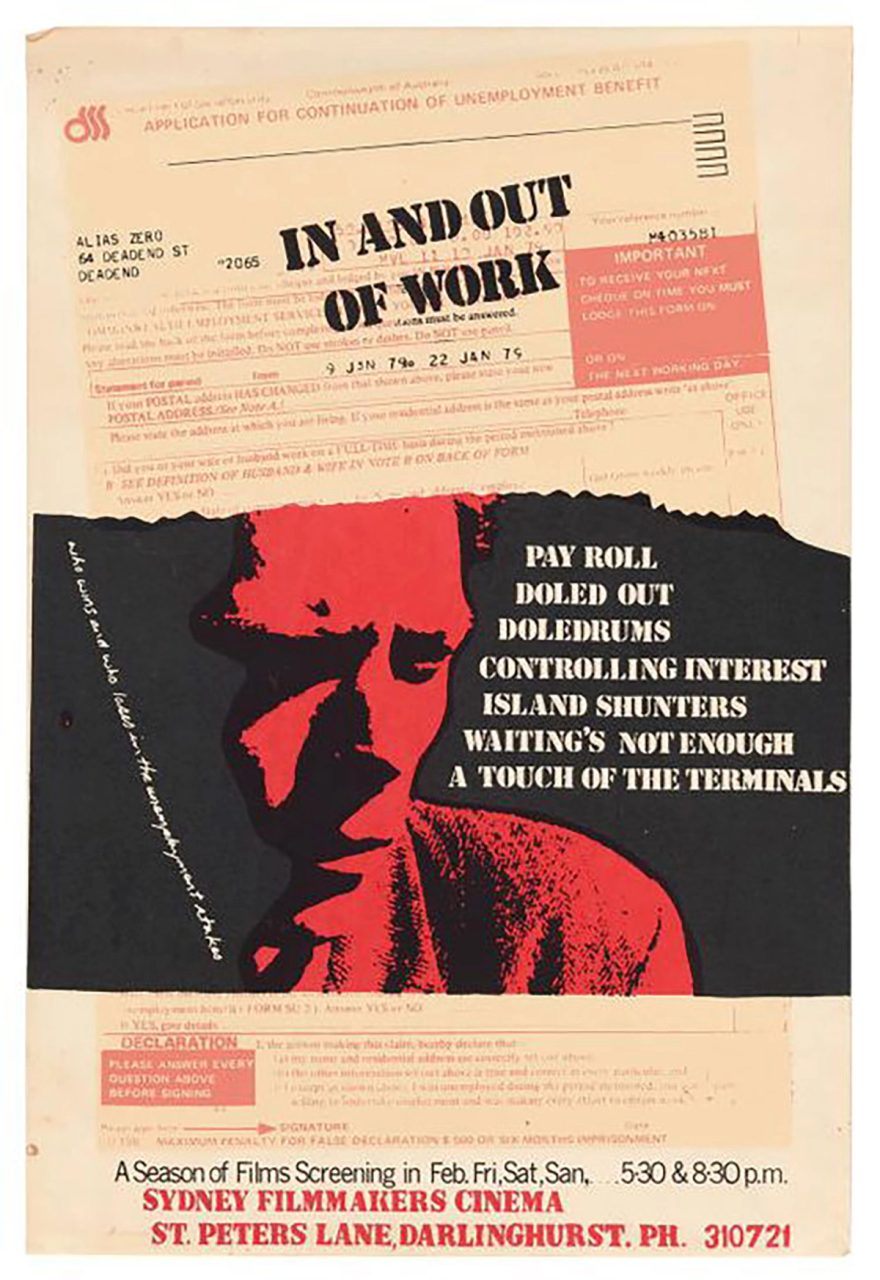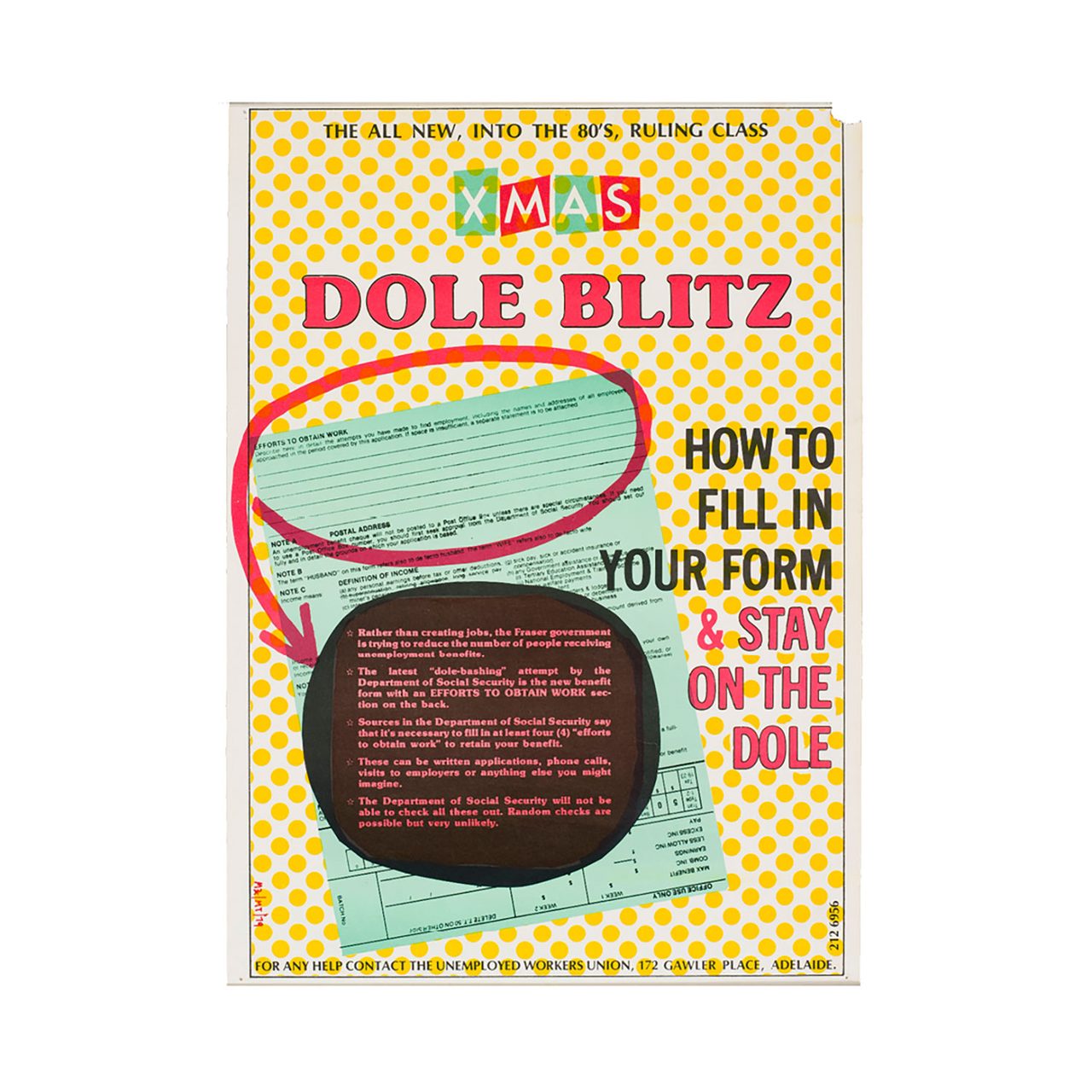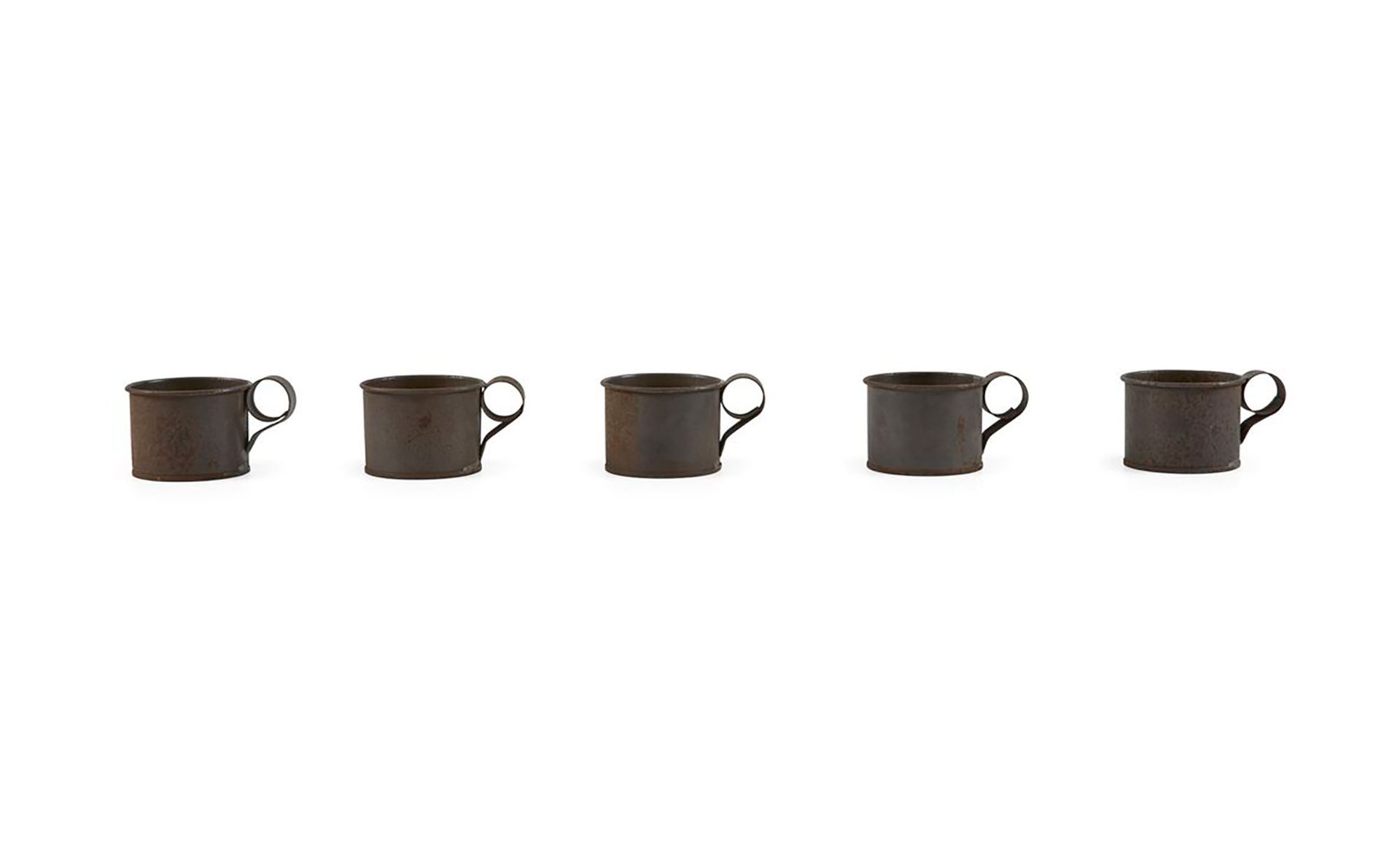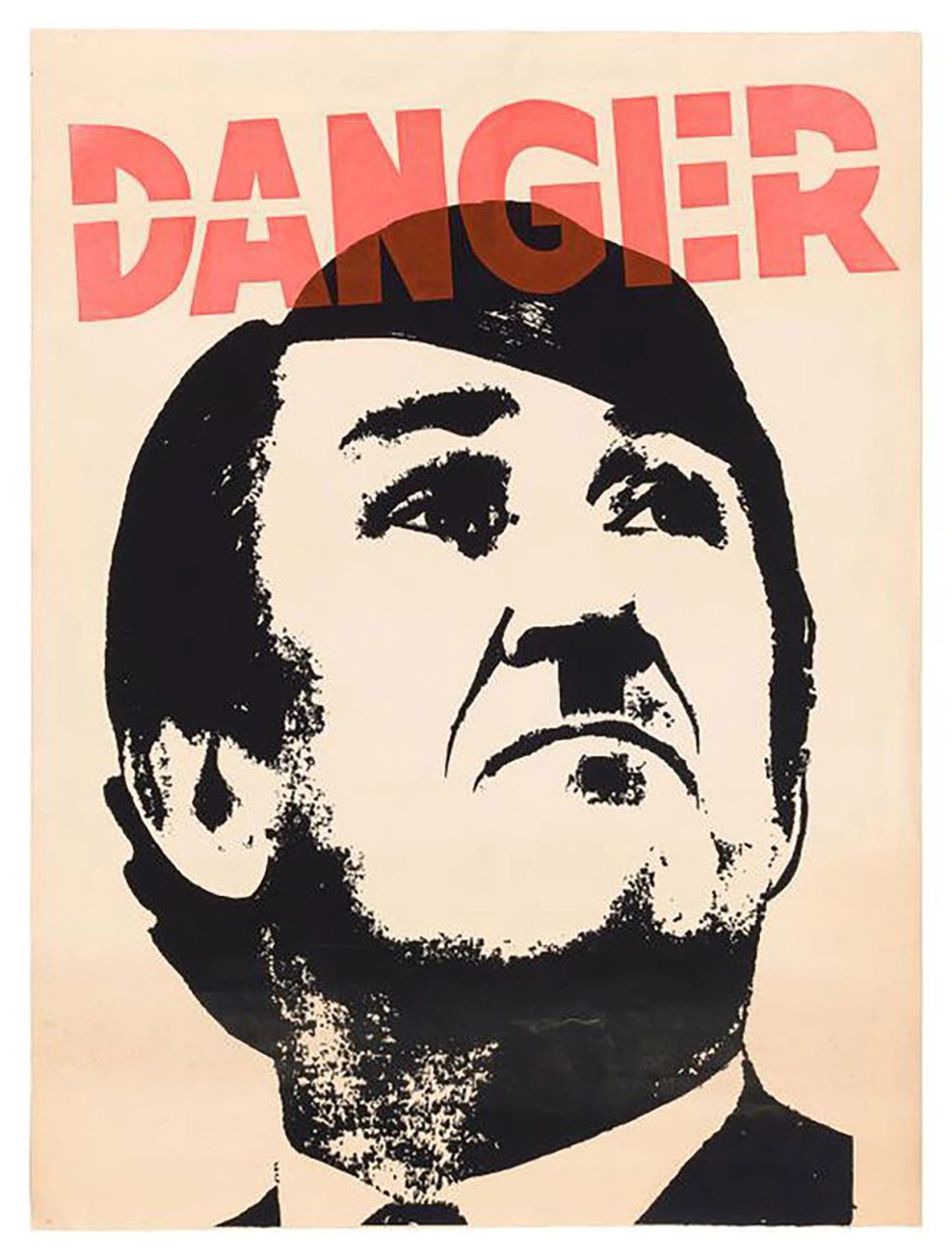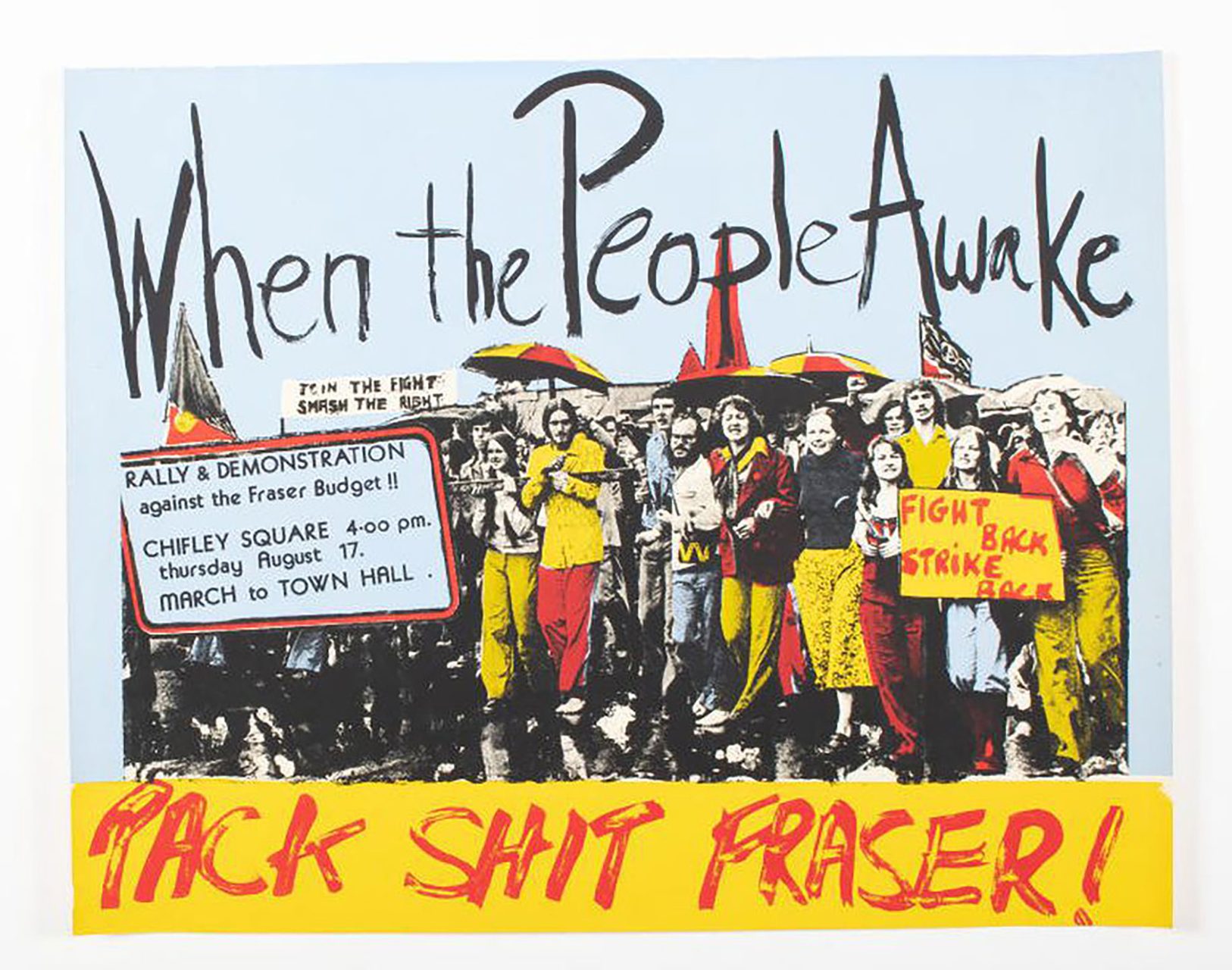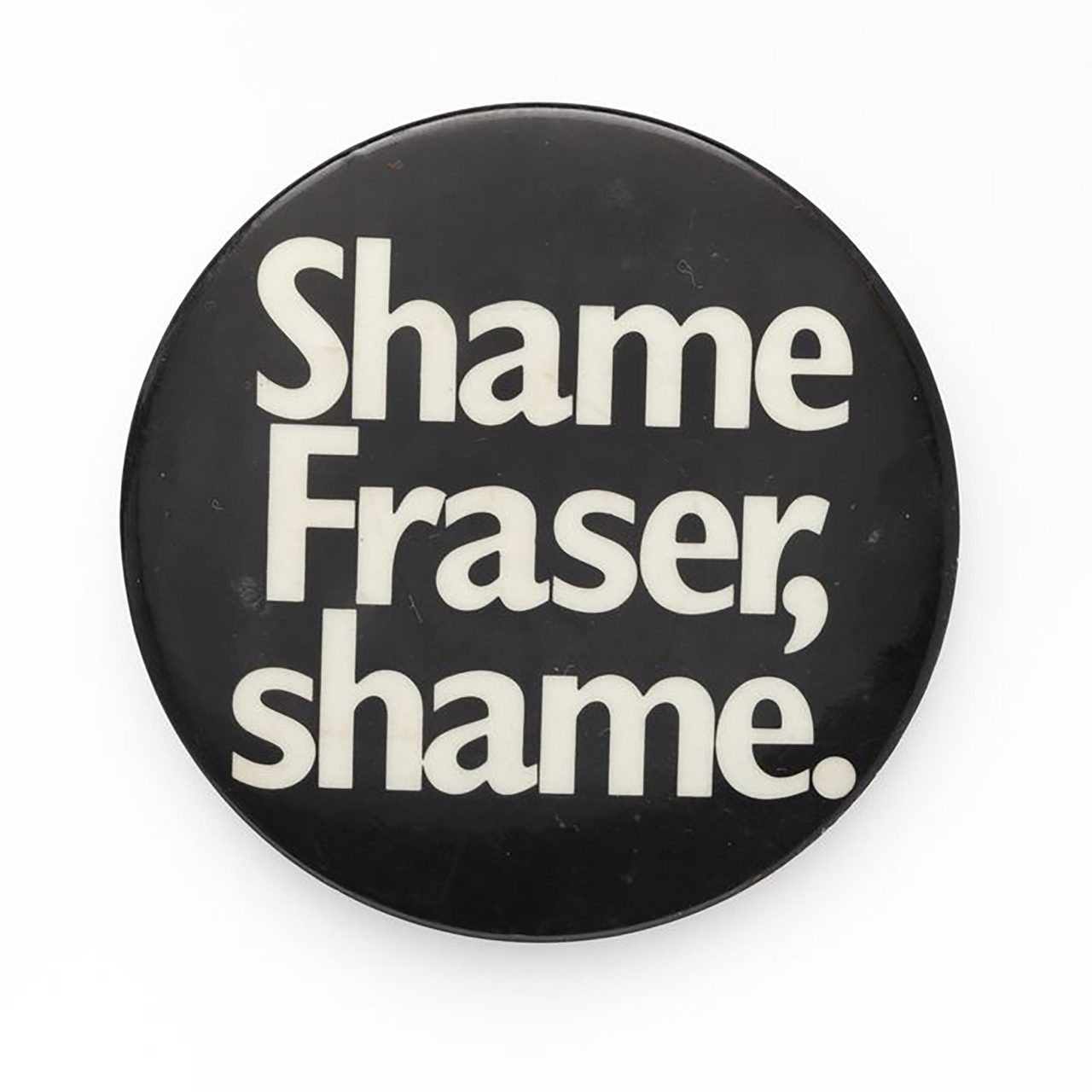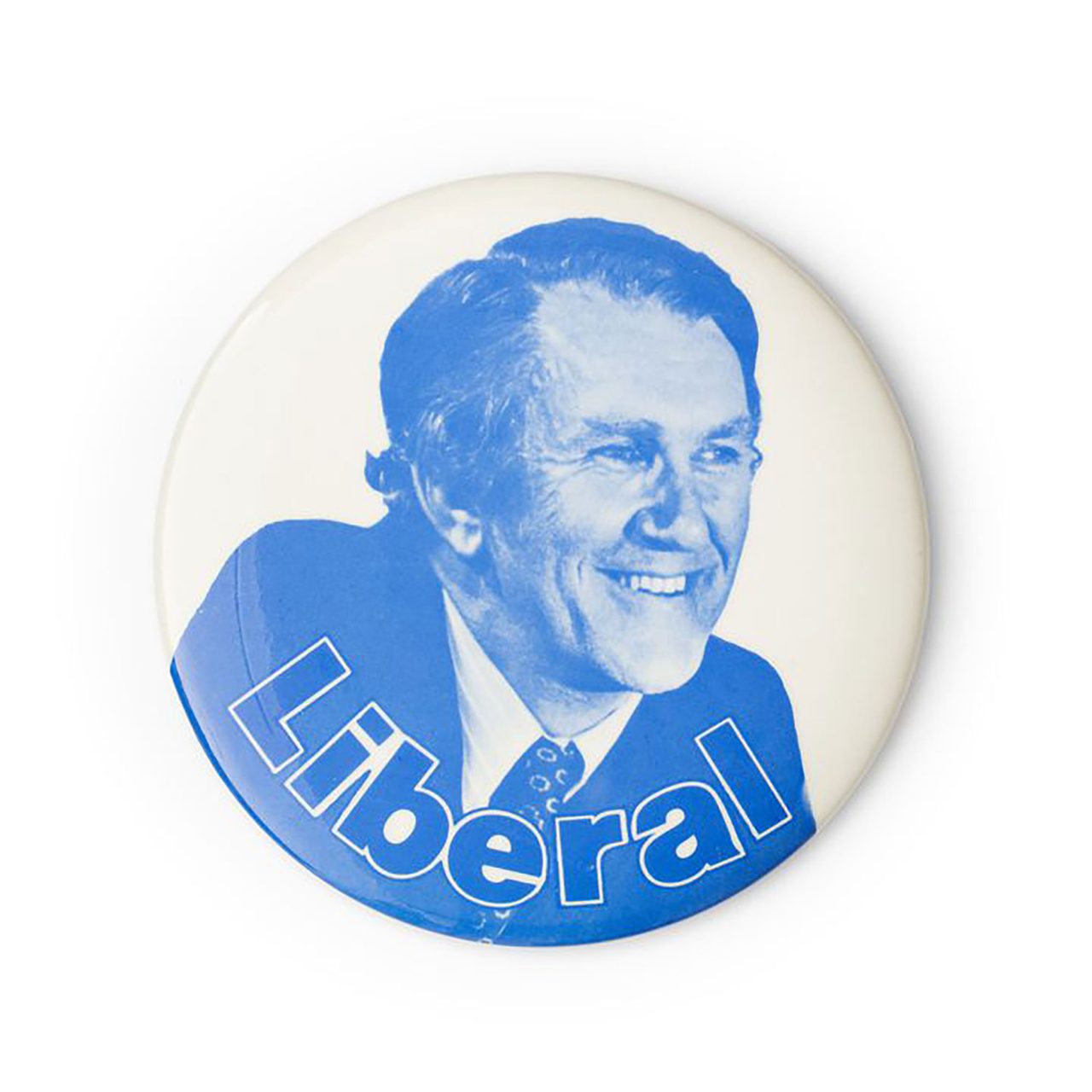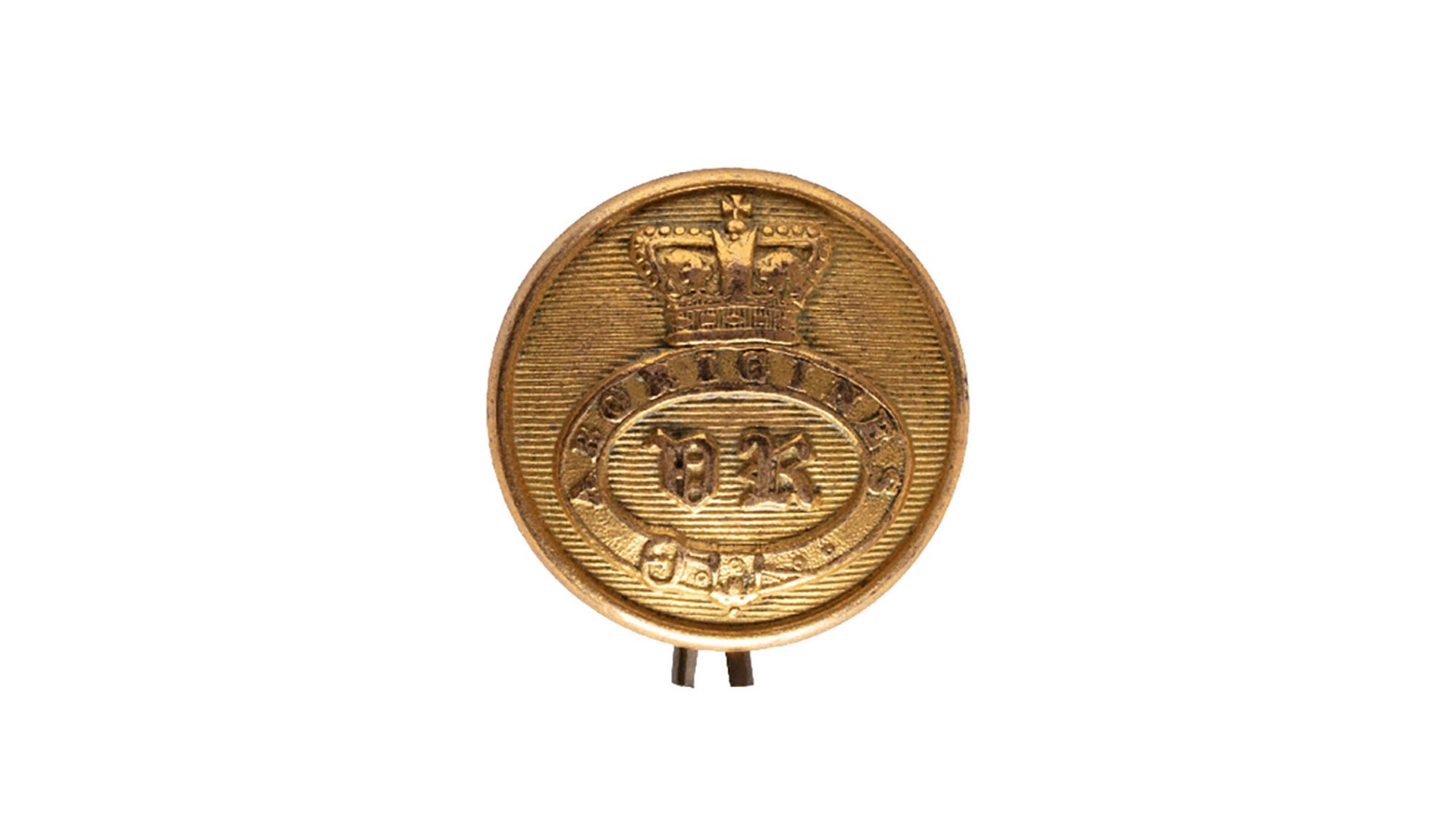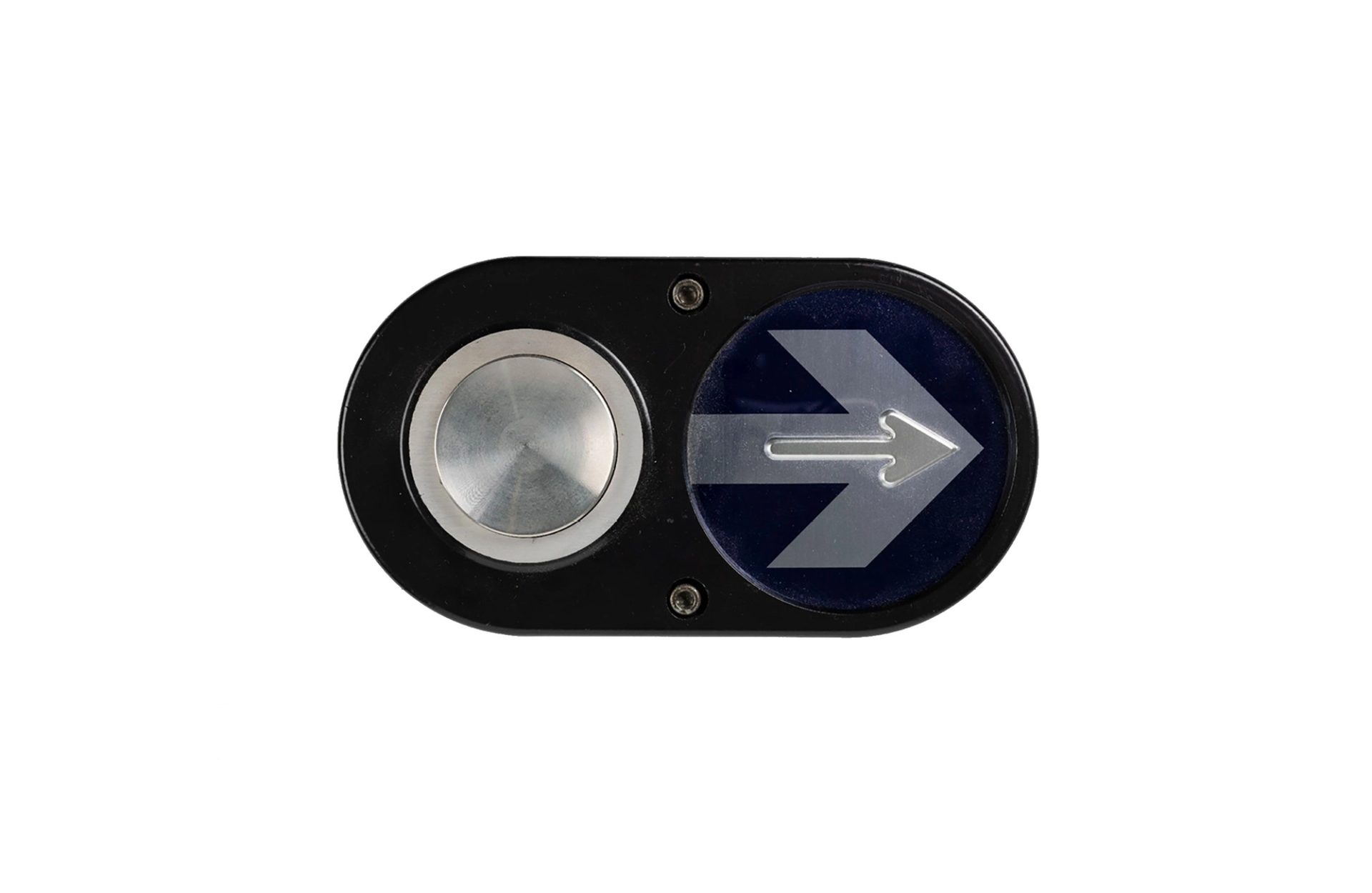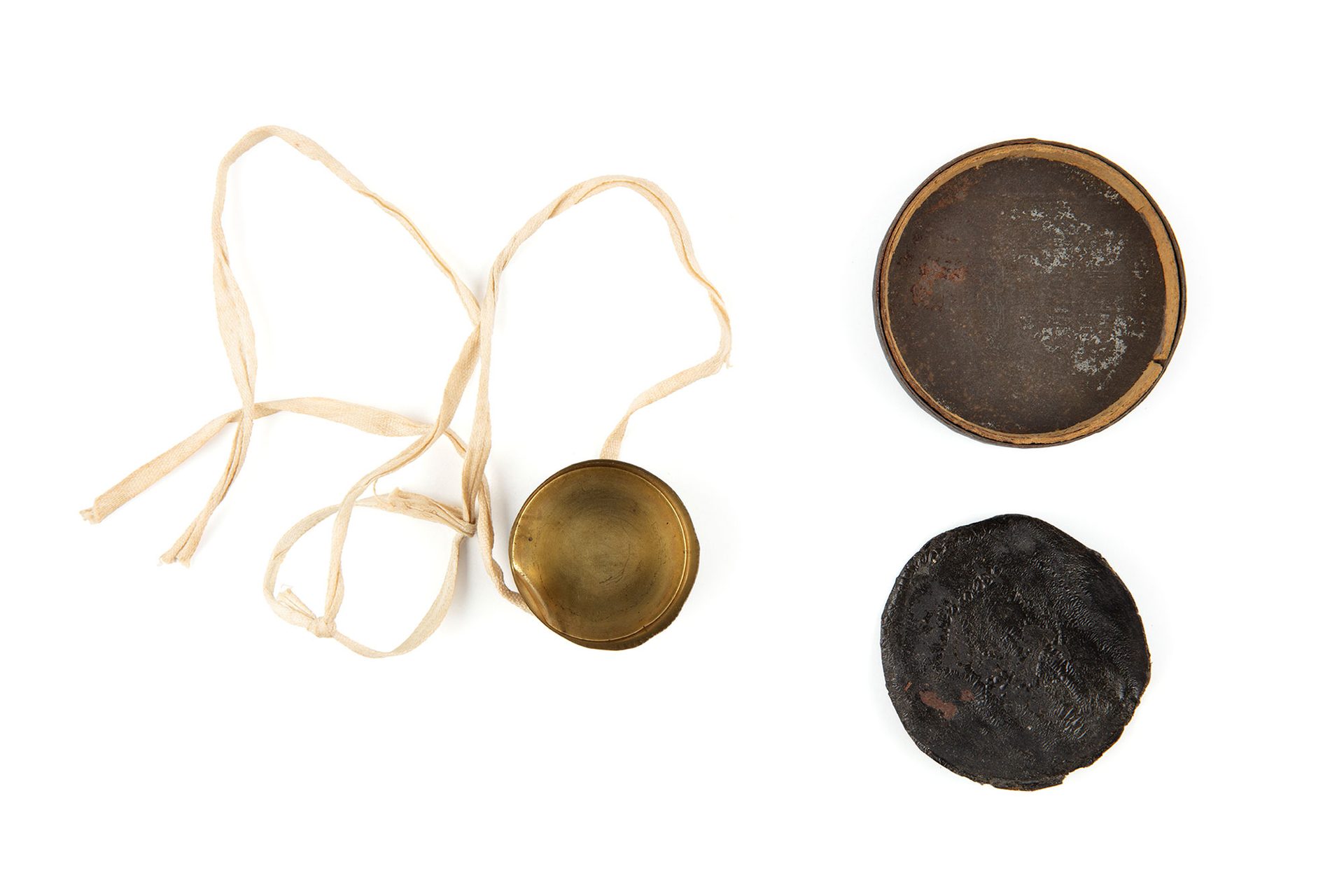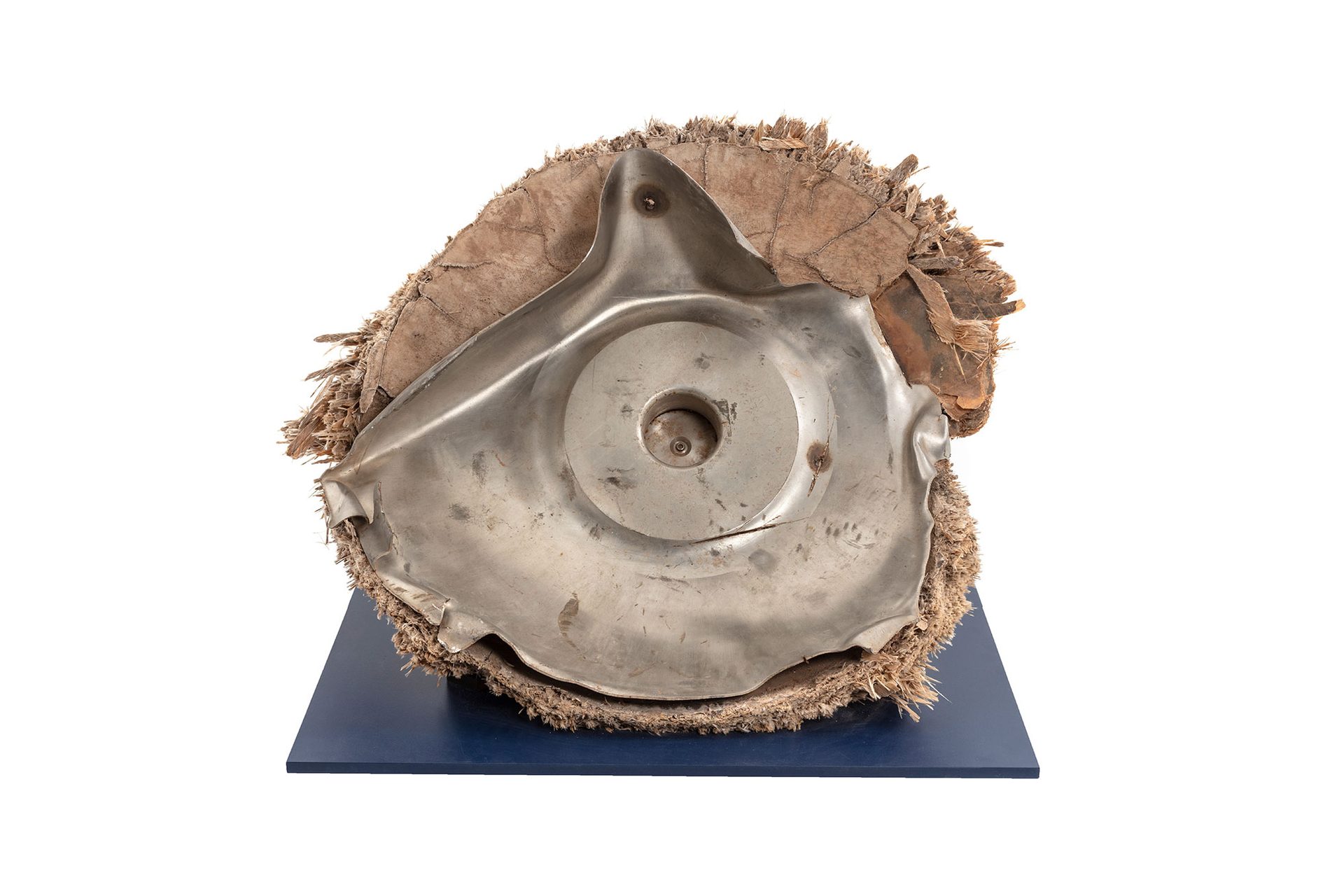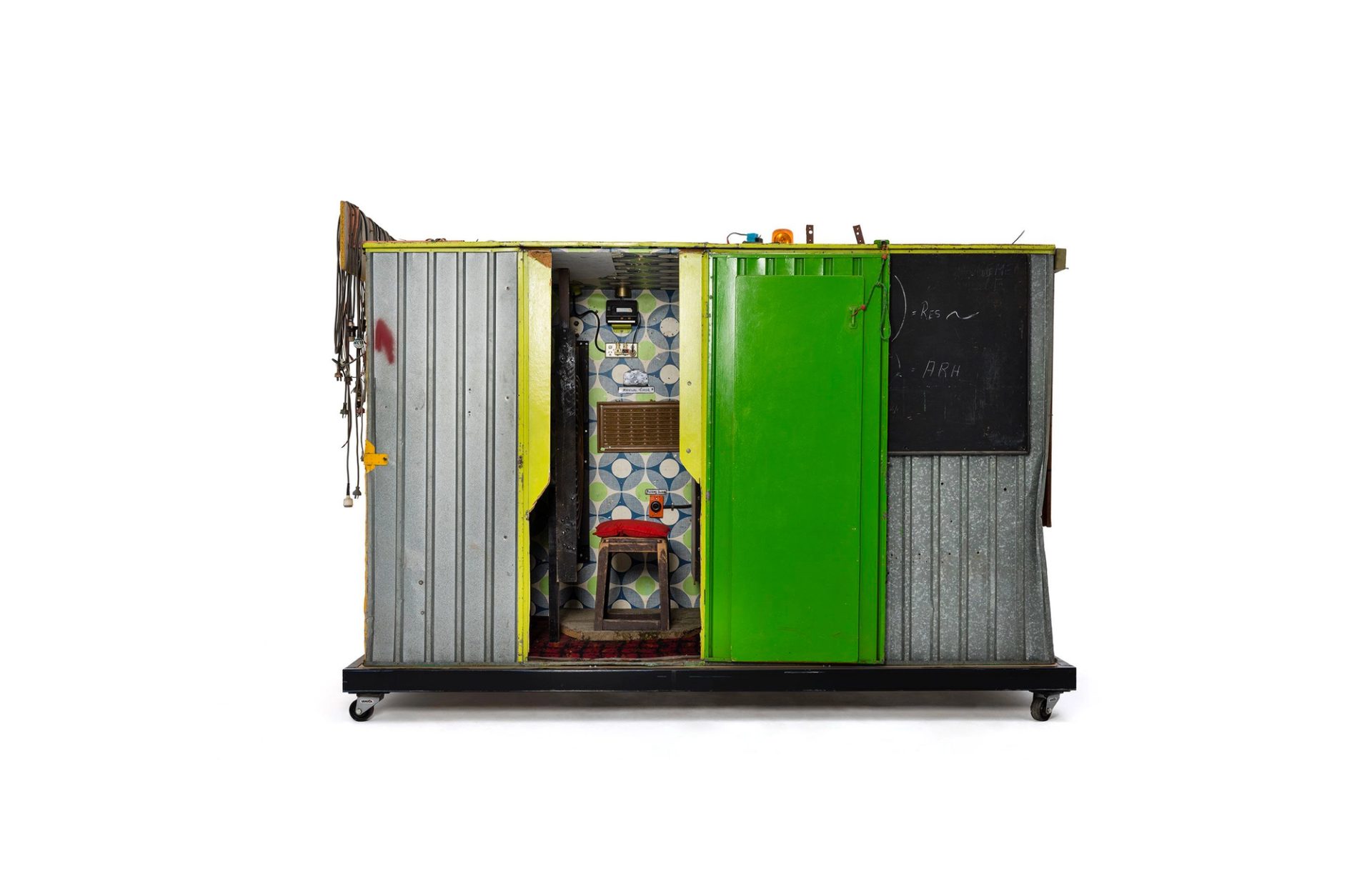Mutual Obligation

From heartbeats to brainwaves, economic cycles to cosmic orbits, oscillations can be found everywhere. This podcast takes artists and listeners deep into the Powerhouse's collection of half a million objects to unearth stories about the vibrations, fluctuations, and movements woven through our world – and beyond it.
Mutual Obligation looks to unemployment activism in 1970s Australia to track the links between unemployed worker unions, the origin of the ‘dole bludger’, and the unemployment policies we live under today. Featured within this story are posters, badges and other paraphernalia created by unemployed workers movements since the 1970s found in the Powerhouse collection.
‘The Dole Bludger of the Year in 1979 won a surfboard, suntan lotion and a six pack of beer; a send up of Fraser's paranoid vision of the surfing, beach bumming welfare cheat.’
Transcript
Sally Olds In 1975, the economist Milton Friedman was a kind of political theory pop star. That year, he embarked on a tour around the globe that included a stop in Australia. First, he met with Augusto Pinochet in Chile. Then, he boarded a Qantas subsidised flight to Australia, where his tour was funded by a Sydney stockbroking firm. He gave speeches in three capital cities. He met with politicians. He appeared on primetime television and the mainstream presses eagerly reported his ideas. Here he is speaking to some of his acolytes in America.
Milton Friedman What do you do with displaced 40, 50-year-old workers who, for practical purposes, really can't be retrained for another profession or put out of work?
News archival Maybe you don't do anything about it. What can you do about it?
SO So, in the mid-seventies in Australia, stagflation was the big economic issue of the time. Stagflation is when there's inflation, high unemployment and economic stagnation all at once. If you have a stagnating economy, in theory, the cost of living should be low because people won't be spending as much. But stagflation is when the economy is stalling, and the cost of living is still rising. Politicians and economists came to see stagflation as a confusing glitch and as a problem that the prevailing Keynesian model couldn't solve. So, Australia was looking for answers when Milton touched down.
Friedman's idea was that unemployment can be leveraged against inflation. He argued that there is a natural rate of unemployment that the market maintains, and this rate of unemployment is a good thing, actually, because it helps push the cost of living down. There's a lot of argument over how exactly this works, and I'm not good enough at economics to fully explain it or to verify whether or not it's true. At times like this, I like to ask my friend Alex to step in.
Alex Griffin So, if inflation is rising quickly in Australia because of zero unemployment, the real value of the Australian dollar will fall compared to other currencies with less inflation. That's bad because we depend on imports for our standard of living and most of what we produce here. And suddenly our money is worth less compared to other currencies. So, we can't buy as much from overseas and we get less for what we sell. So, if inflation goes up, living standards fall. Because we can't afford imports. Businesses will have to cut costs because importing is more expensive and that probably means cutting jobs. Companies will produce less and jobs in export industries will probably get cut as well, which just kicks on to the rest of the economy. So, we end up with increasing unemployment anyway.
SO In other words, for Milton, unemployed people are produced in the normal push pull of the market. They are by-products of a healthy economy.
MF So far as poverty is concerned, there is never in history been a more effective machine for eliminating poverty than the free enterprise system and the free market. The period in –
SO If Milton Friedman hadn't come to Australia his ideas or similar ideas probably would have leaked across anyway. Friedrich Hayek, another staunch advocate of free market economics, came out the following year. The Institute of Public Affairs ran propaganda campaigns for Chicago and Austrian style economics in schools and unis. And by the time of Milton's visit, Australia was already beginning to abandon full employment, which had been its official policy since 1945.
‘Different people define full employment in different ways. For some, it's as close to net zero as possible. For others, it's as close to 100% employment as you can get without raising inflation.’
It lasted pretty much until 1975, the same year Friedman came to Australia, the same year the beloved Gough Whitlam was sacked as Prime Minister, the same year that the Liberal politician Malcolm Fraser stepped into the top job.
If your economic system needs some level of unemployment to function well, you'll have to figure out what to do with all the unemployed people. This is where Centrelink comes in.
SO Centrelink is Australia's answer to the 'what to do?' question. But sometimes it feels like Australia's answer is creeping closer to Milton's. What do you do about all the unemployed people? Maybe nothing. What can you do?
Centrelink phone line Thank you for holding. Your call is progressing in the queue, and we will answer you as quickly as possible.
SO When you dig back into activism from this era, a common theme emerges. Hatred of Fraser. And Malcolm Fraser was pretty hateable, at least in those years. He was born in Toorak in Melbourne and grew up on two different, enormously large sheep and cattle stations before heading off to Oxford. His favourite book was Atlas Shrugged by Ayn Rand. His most famous quote was ‘Life wasn't meant to be easy.’
Fraser and Friedman didn't cross paths in 1975, but when Friedman returned two years later, they sat down together. It turned out that even Friedman didn't like Fraser. He later told one of his friends that he had never had a more unpleasant or disappointing meeting with a leader.
The poster you're looking at was made in 1979. In 1979, Malcolm Fraser said that unemployed people should not be encouraged to have unemployment benefits and go and surf at the beach at the taxpayers' expense. This poster tells us that rather than creating jobs, Malcolm Fraser is trying to reduce the number of people on the dole. Unemployment was already bad when he was elected, at almost 5 per cent. By '79 it reached 6.3 per cent. By the time Fraser lost re-election in '83 it was at 10 per cent. I'm not saying he raised unemployment on purpose in line with Milton's ideology, no politician wants mass unemployment, it just looks too bad. But in any case, Fraser strongly opposed job creation, dismantled social services, hamstrung the trade unions and did not fix the economy.
Owen Bennett When mass unemployment re-emerged, when full employment was abandoned in '75, you had groups come up again.
SO This is Owen Bennett, who co-founded the Australian Unemployed Workers Union in 2015.
OB The benefit was actually set around the poverty line, like that was one of the great achievements of the Whitlam government. They put the unemployment benefit at the poverty line and then it kind of sunk in real terms under Fraser, which led to this activism emerging. The focus of the activism was mostly on the right to work because people wanted to return back to the full employment period, and they thought that governments had just basically let them let them rot.
SO The context is different, but the problem remains. Unemployed people are still seen as a blight on society, something to be controlled and disciplined. The AUWU came about when Owen was being forced to work for the dole. They began as a hotline unemployed people could call to get help dealing with Centrelink; a hotline run out of Owen's bedroom. It grew quickly.
OB The idea was as people pass through the hotline, they would become more and more radical in their ideas, and they'd be more willing to stand up and become a public voice.
SO They did media stunts like when they awarded the Golden Shoe to the worst job service provider in Melbourne. They were on the news often.
News archival Owen, thanks for your time. Is your union just a club for dole bludgers?
SO Owen and the AUWU were drawing on a legacy of unemployed worker activism. It's a legacy that tends to get forgotten. You might remember some more recent history, like the Dole Army hoax in the 2000s.
News archival They call themselves the Dole Army and they say they're on the march. We have members in Sydney, Brisbane, Darwin, Adelaide, Albury-Wodonga. They choose not to work. Instead, most collect the dole. Home is a secret underground tunnel.
SO But it stretches back across the whole 20th century. Here's one example. In 1931, police tried to evict a war widow and her children from their home in Newtown, and members of a previous unemployed workers union barricaded themselves into the house. They fought with police for several days in what's known as the siege of Union Street until the family were allowed to stay. Not only this, but the premier introduced legislation to prevent unemployed people being thrown out of their homes.
‘You should have seen us down at Erko, fourteenth August, Saturday night. To Newtown, Stanmore, Enmore and Petersham calls went out, 'Workers unite!' We built a bloody great wall with planks and boards full seven foot tall. We didn't mind the howling wind and sleet when we stood around the fire at Union Street.’
OB What they managed to achieve during the Depression was amazing. The Work for the Dole program emerged then, and it was only because of the massive organisational effort of the unemployed workers movement that defeated that program. We're talking tens and tens of thousands of people, like seriously organised members. Like I remember I saw once the timetable of what they would do for the week, and it was like every morning, every evening there was something on. And that has never really been repeated. But there has been efforts.
SO Back in the ‘70s, for instance, less is known about this period of activism, which is weird because we know it was an era of prolific and militant struggle. Historians estimate there were up to 100 different unemployed workers unions active in Australia in the late 1970s.
OB That was probably the peak of amazing history of unemployed activism, because there was two big organisations. I mean, there was unemployed workers unions everywhere, but the big ones were in Melbourne and Sydney. So, there was the Unemployed People's Union in Sydney and the Unemployed Workers Union in Melbourne. Broadly, the strategies operate that they adopted was activist based cells that would go and do stunts to try to raise awareness about what's going on. The Unemployed People's Union, one of their big events was the annual Dole Bludger of the Year, so they tried to take back ownership of some of those slurs because that was the height of the dole bludger mania.
SO Which of course coincided with Fraser's reign. The Dole Bludger of the Year in 1979 won a surfboard, suntan lotion and a six pack of beer; a send up of Fraser's paranoid vision of the surfing, beach bumming welfare cheat. Then in Adelaide that same year, Fraser was pelted with fruit at a function, surrounded by crowds of people chanting, ‘We want work, not the dole.’
Before the ‘70s, the dole bludger didn't exist, at least not in those times. During most of the 20th century bludger meant anyone who relied on someone else's labour or money to get by. It was originally used to refer to pimps. In this scenario, bludgers or pimps who mooched off sex workers. The first public use of bludger, not in relation to sex work, came in 1973 by the Liberal politician Bert Kelly, who incidentally was really into Milton Friedman. Kelly talked about how citizens were paying extra taxes to fund bludgers.
Dole bludger came in 1974 in a newspaper headline, 'Anglican Minister Slams Dole Bludgers'. In his sermon, an Anglican dean had claimed that a generation of shameless bludgers were taking advantage of Australia's social security. So, by the time Fraser got elected, the dole bludger was a handy scapegoat for his government's failures. The dole bludger was pitted against the hard done by taxpayer. In this story, the taxpayer had been forced to subsidise bludgers. Again, we can think of that surfing bludger whose life of leisure is funded by the noble taxpayer.
OB That has been the recurring theme for the last century when it comes to unemployment, politics is to divide unemployed workers from workers in jobs. And that was why one of the most important things was to create solidarity with the union movement, because that narrative was so strong that we needed to oppose it in action.
SO There were moments when it seemed like the broader union movement was going to rally alongside their unemployed comrades.
OB The ACTU, led by Ged Kearney, was really supportive. I remember really well Ged standing up admitting that the union movement haven't done enough about unemployment.
SO But for the most part, right now unemployed workers are still pushed to the fringes. I've been talking mostly about the Liberal Party, but the Labor government is often just as bad. Australia's new Labor Prime Minister, Anthony Albanese, has been busy rolling out work for Australia. This will include a points-based activation system, a new form of mutual obligations. You no longer have to search for 20 jobs a month, but everything you do will be assigned different points. If you search for jobs, you get points if you get your driver's license, you get points, but less points because the link to employment is less strong. If you don't get enough points, your payments could be suspended.
Centrelink phone call Just bear with me. Won't be too long.
SO Back to the poster. The all new into the eighties ruling class Xmas Dole Blitz. Powerhouse museum, object number 2007 56 104. Screenprint on paper, 1979.
I tried hard to track down whoever made it. NZ and MT. You can see these initials on the bottom left alongside the date. I asked everyone I could think of. Nothing. Then I realised that that's not really the point. The poster was most likely commissioned by the Unemployed Workers Union in Adelaide. It has their name and contact details on the bottom. It was designed and printed by a radical poster making collective, but exactly which one is not clearly identified. There were several collectives making work like this, including Redback Graphics and the Earthworks Poster Collective, which later became the Tin Sheds Workshop. The art workers involved didn't usually sign their work because that would undermine the communal ethos, and regardless of who made it, the point of the poster was not just its artists or its artistry, but its message. The point was to denounce the Fraser government, promote the Unemployed Workers Union and get the word out to unemployed workers about the job search forms, which to me feel a lot like the mutual obligations now. We don't have Fraser and we don't have Friedman, but they're ghosts in the machine. What we do have is an all new into the 2020s ruling class dole blitz.
Centrelink phone call You’ll find your customer access number on any letter that we've sent you. But let's try again. What's your customer access number?
(I don't have one).
Sorry. You need a customer access number to access any of the self-service options.
Thanks for calling. Goodbye.
About Sally Olds
Sally Olds is a writer whose work has been published by Sydney Review of Books, un Magazine, the Institute of Modern Art, and AQNB, among other publications. In September 2022 she released her first book, People who Lunch: Essays on Work, Leisure, and Loose Living (Upswell). Keep up with Sally via her website, Twitter and Instagram.










